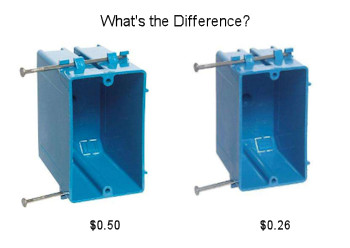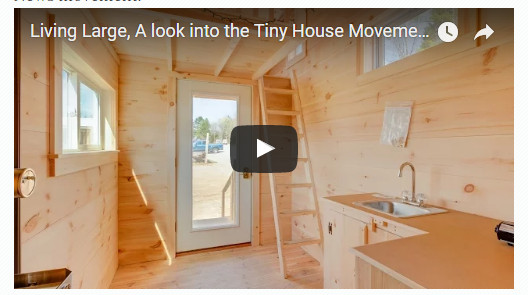One of the most effective ways to build wealth is to either own land or own a home. If you have both, you may be able to secure your financial future and that of generations to come. But houses are expensive and a major portion of the cost goes to the general contractor who oversees the project. Interestingly, it hasn’t always been this way. Back in “the good old days” people would band together and help their neighbors build a log cabin (often only one room) and then the owner would slowly add to it as he got the time and resources. But as time went on people lost the skills necessary to build their own homes and neighbors became too busy with their own lives to help each other.
Then in the 1960’s and 1970’s “Hippies” decided that the rat race was robbing them of their freedom to experience life and they started opting for cheaper ways of living that didn’t involve a big house and a mortgage. They tried Tipi’s, Yurts, Log Cabins, Underground Houses and much more. In the 1970’s a variety of magazines like “New Shelter” sprung up to help promote some of these ideas but the “Mother” of all alternative living magazines was Mother Earth News. Its pages included articles on everything from building alternative style houses to raising chicken and goats, to how to build your own windmill or solar collector.
These days the “Tiny House” movement has its roots in the original Mother Earth News movement.
Do It Yourself and Save
By doing some of the work yourself you can save a bundle. When you build a house you can choose which portions you want to do yourself and which portions to contract out. You don’t even have to be able to swing a hammer to save. If you are a good manager, you can act as the “General Contractor” and get your own permits, and then hire “Sub-contractors” to pour the foundation, frame the walls, install roofing and siding, plumbing, electrical etc. Or you can choose to do any or all of these functions yourself.
Buy Materials in Bulk and Shop Around

One time, I needed about 30 2×12’s 20 feet long. I called Lowes and Home Depot and got similar prices then I called a local Lumber yard and in this particular instance their price was literally 2/3rds of the price at either of the other two. So it pays to shop around. It also pays to look at alternatives. For instance, “old work” electrical boxes (like in the previous example) cost $1.01 each at Home Depot but “New Work” boxes are $0.26 or $0.50. So if you can use “new work” boxes you can save between half and 3/4 of the price. But wait, why are they $0.26 or $0.50? The difference is size, although the opening is the same size, one is slightly deeper than the other. The cheaper one has a volume of 18 cubic inches and the more expensive one has 22 cubic inches. So once again, if all you are putting in it is a switch or an outlet you can save half the price. If you need space for more connections inside you will need the larger boxes but don’t just buy the larger boxes if you don’t need them.
Work with Prefabricated Components
As we saw in the video, you can buy an entire tiny house as a kit or even prefabricated. You can even buy kits for full size houses. This is the ultimate in buying in quantity. The nice thing about kit houses (whether log homes or “stick built”) is that they come with all the pieces necessary so you won’t be running to the store every day. They also come with instructions so even beginners can do it. On a smaller scale you can just get things like prefabricated trusses that make it easier to build a shed, garage, or other structures. As they come already made, all you need to do is install them. Truss companies such as Prefab Technology Pty Ltd, have engineers on staff to help you design your trusses so they are sure to hold the proper load. Since they do the engineering for you you don’t have to hire an engineer which can be expensive.
You Don’t Need Fancy Finishes
While you may like the look of tile or stone, you don’t need them to make your house look good. The use of laminate or vinyl floors or counters gives your home an inviting feel without having to go broke creating it. Vinyl or laminate may also be easier to clean and better for homes with high levels of foot traffic.
Don’t Forget Your Permits
You may need to allow the city or town to inspect your plumbing or electrical work before drywall or other materials go up. Failing to do so could result in having to tear down walls or stop construction until they are done. Fortunately, the cost of permits or having inspections done is relatively low regardless of where you live.
Look at Alternative Building Styles
These days building inspectors have become more accustomed to seeing requests for “alternative” building techniques and so they are less inclined to reject your ideas out of hand. You might be able to build your own Yurt, Underground house or even a house made from shipping containers. And just because it is made of shipping containers it doesn’t have to be ugly! Just check these out:
https://youtu.be/oyVR1HC4kBU?t=1s
Building a new home doesn’t have to be an expensive proposition. By doing some work yourself, shopping around and being open to alternatives, you can create a home that will meet your needs and increase in value over time.



